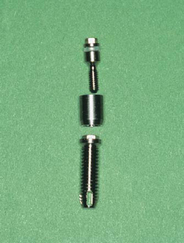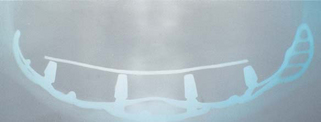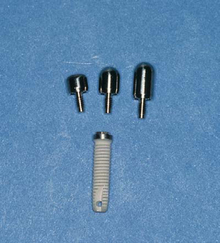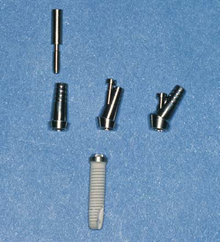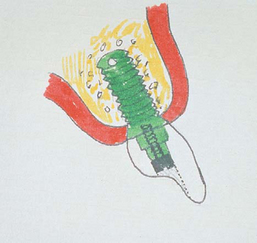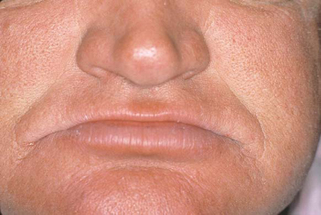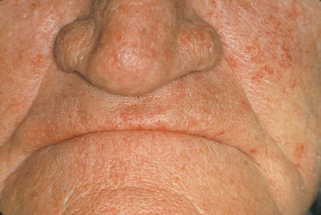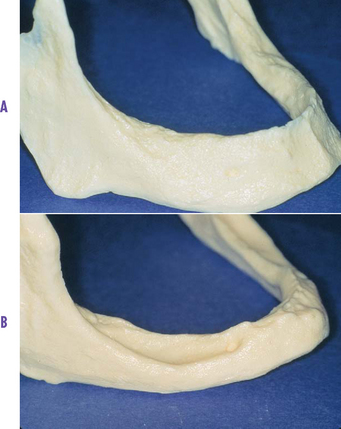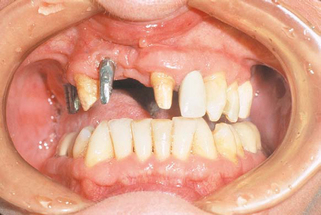CHAPTER 10 Implant Dentistry
Substitutes for Tooth Roots Placed into Your Jaw
Dental practitioners have tried to develop artificial teeth to be placed in the jawbones since the origin of dentistry, but in recent years activity has increased in the area of implant dentistry. Initiated by Swedish research in the 1960s, the placement of small titanium cylinders or screws into the jawbone has progressed from an experimental (and highly criticized) procedure to common usage by many dentists (Fig. 10.1). The titanium-screw concept popularized implant use, but other types of implants were available much earlier. Examples are blades placed into the jawbone, with heads protruding above the gums (Fig. 10.2), and subperiosteal implants placed on top of the bone, between the bone and gums (Fig. 10.3). These types of implants are still used, but the screws or cylinders are more popular.
If implants are so good, why doesn’t everybody have them instead of natural teeth? Numerous aspects of the implant concept are complicated and difficult for dentists placing them, making the procedure less predictable than desired. Implants are expensive, and, as with natural teeth, require upkeep by patients and dentists. When implants are really needed, they do not have satisfactory substitutes. The task for you and your dentist is to determine whether your oral needs would be served best by using dental implants to replace the root structure of the natural teeth, followed by some form of prosthesis (artificial replacement) for the missing tooth structures. The following pages will help you make that decision with the help of your dentist.
WHAT YOU SEE OR FEEL
Conditions, Signs, Symptoms Related to Implant Dentistry
1. All of Your Natural Teeth Have Been Removed
(Fig. 10.7). This type of condition is called edentulous. Loss of all teeth is decreasing in frequency because of the use of fluoride, better diet, and improved oral hygiene. However, millions of people around the world have lost all their teeth. Unfortunately, much of this tooth loss is among those persons who are least able to afford having implants placed.
If you are an edentulous person, you have the following alternatives:
2. Some of Your Natural Teeth Have Been Removed
(Fig. 10.10). A high percentage of people lose some of their natural teeth during their lifetime because of accidents, tooth decay, gum and bone disease, or other reasons. Although there are numerous solutions for replacing several teeth, dental implants are an excellent alternative.
Stay updated, free dental videos. Join our Telegram channel

VIDEdental - Online dental courses


